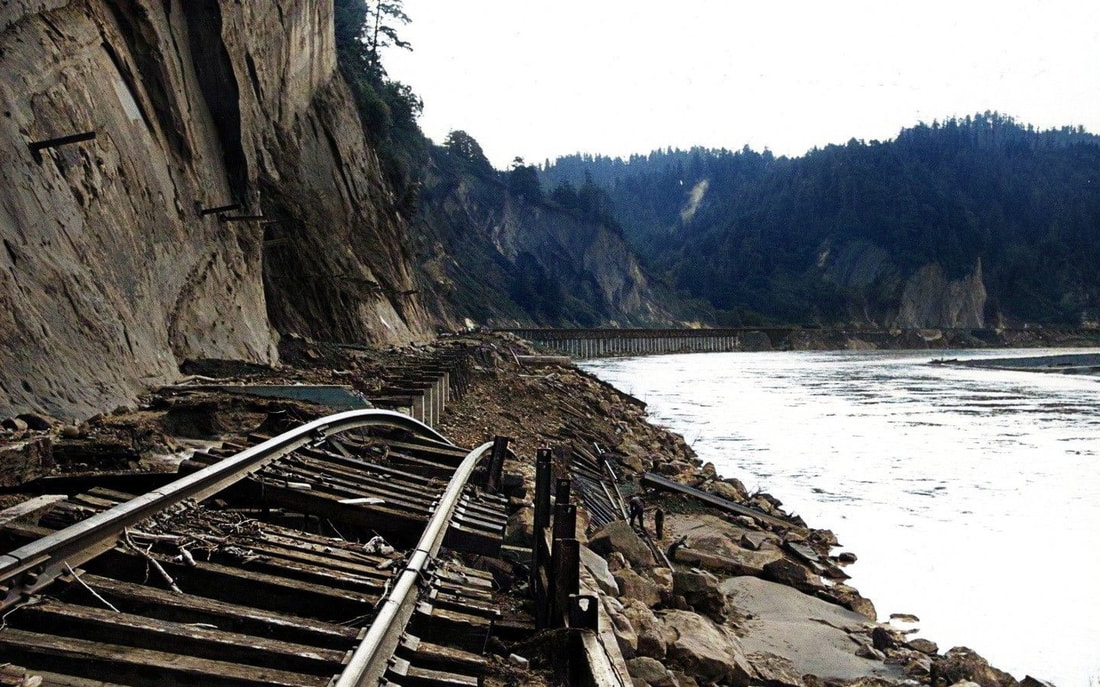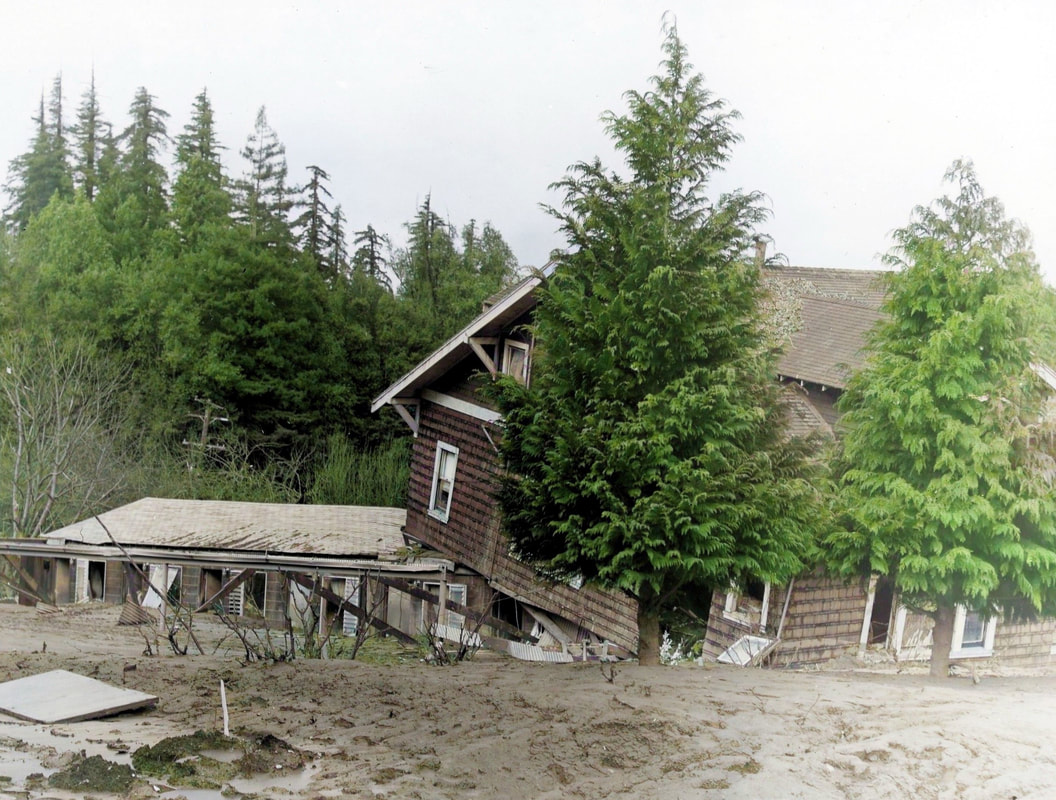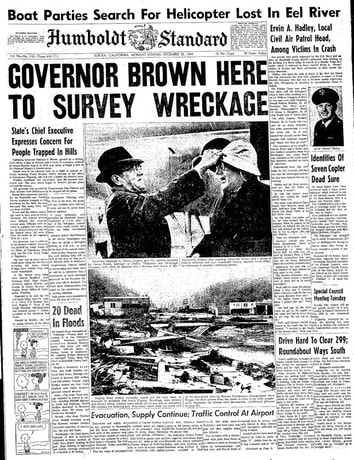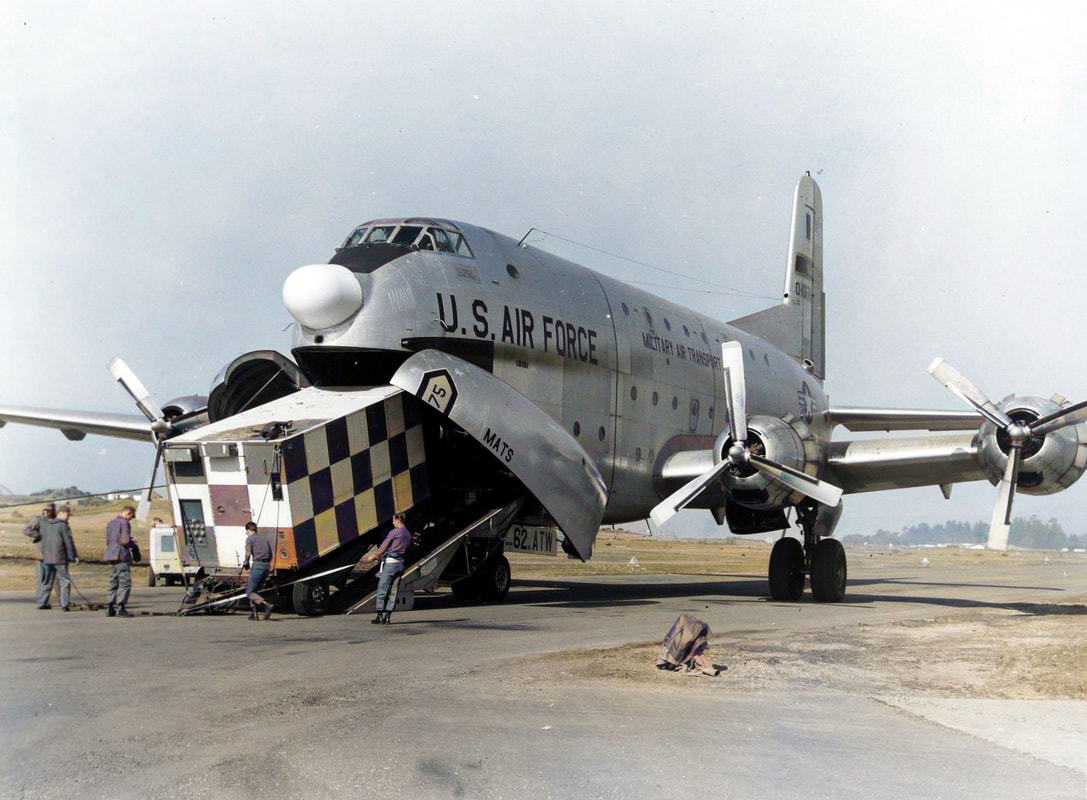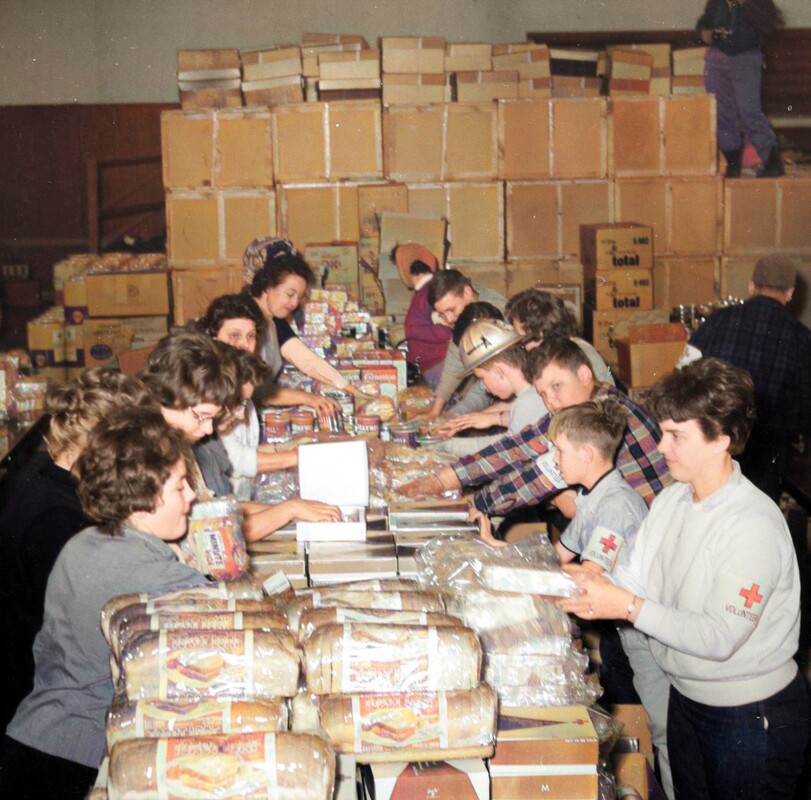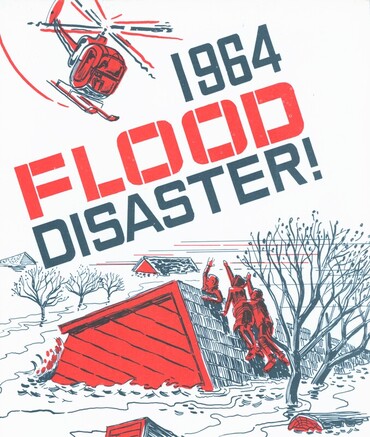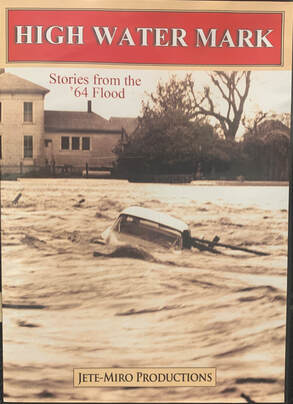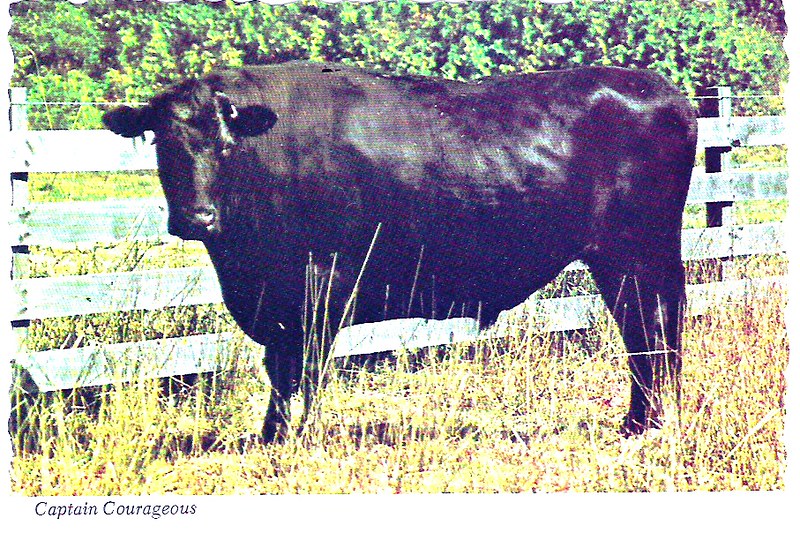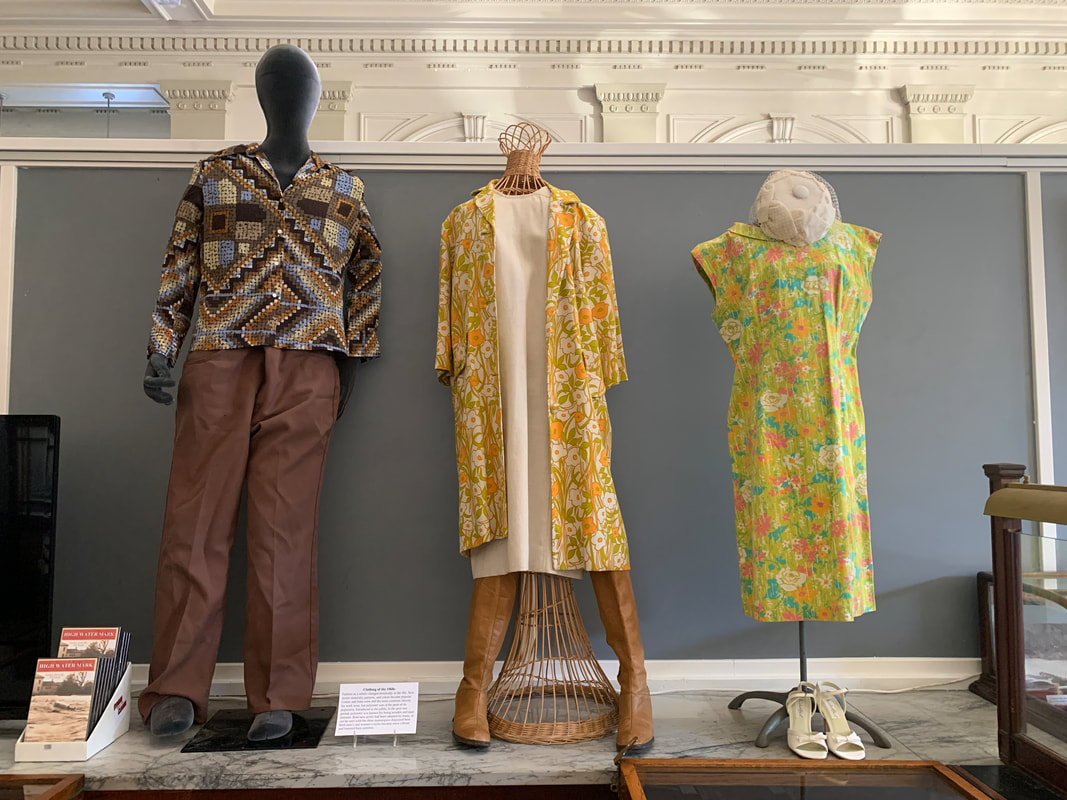The Christmas Flood of 1964
prepared by Executive Director-Curator Josh Buck
A COLORIZED deep-dive into the "Thousand-Year" Flood that ravaged most of Northern California over the holiday season (December 18 - January 7, 1964).
|
Railroad Wreckage!
The Northwestern Pacific (NWP) & Southern Pacific (SP) sustained catastrophic damage to the railroad tracks, and the very land it rested on! The heroic effort of railroad workers to remedy the lines & facilitate supply transport to the affected region culminated in a Re-Driving the Golden Spike ceremony in 1965. |
|
Floating Debris of All Kinds.
Homes, buildings, cars, everything in the area became deadly debris in the raging floodwaters. If massive logs of milled lumber didn't destroy a home, the waters washed it off its foundations. If it didn't collapse, trees went through it. This made rescue efforts treacherous for both victims and rescuers alike, and complicated the rebuilding of the area due to the inevitable clean-up. |
|
As It Happened.
Local newspapers reported on the devastation daily, and was a major help in keeping local residents up to date on more rain & flooding to come, rescue efforts and responses on the state & federal level to the disaster. Follow the dates around the pyramid case to experience it as if you lived it yourself! |
|
Extra! Extra! Read All About It!
Check out various publications reporting on the 1964 flood after the worst was over, including LIFE magazine and special limited printings from local groups. Both in color and black & white, these magazines did the most work getting the word of the flood out to people beyond California. |
|
High Water Mark: Stories from the 64 Flood.
Now playing along the gallery wall is High Water Mark: Stories from the 64 Flood, as told by those who lived through it. The filmmakers have included archival photos, video and 16mm footage to bring the story to life. "While not everyone interviewed appears in this film, their stories were crucial to our understanding of the event. Many thanks to those who opened their hearts and their stories to us." - Jete-Miro Productions |
|
Captain Courageous of Del Norte
One of the most remarkable survival stories from the 1964 Flood features a Black Angus steer nicknamed “Captain Courageous.” The young bull was swept away by the floodwaters from his pasture at Klamath Glen, but by clinging to driftwood and fighting for his life, he rode the torrent all the way down to the ocean. From there he didn’t have to swim, but survived by sitting on a huge raft of logs and debris, carried along for some 30 miles along the Pacific coast before ending up in Crescent City Harbor. |
|
Clothing from the 1960s
Throughout the Main Hall are examples of clothing worn during the 1960s, including some garments from local schools like Humboldt State College and Arcata High! These are likely examples of styles worn by those who lived through the flood, bringing the vibes of the time period to the exhibit! |

